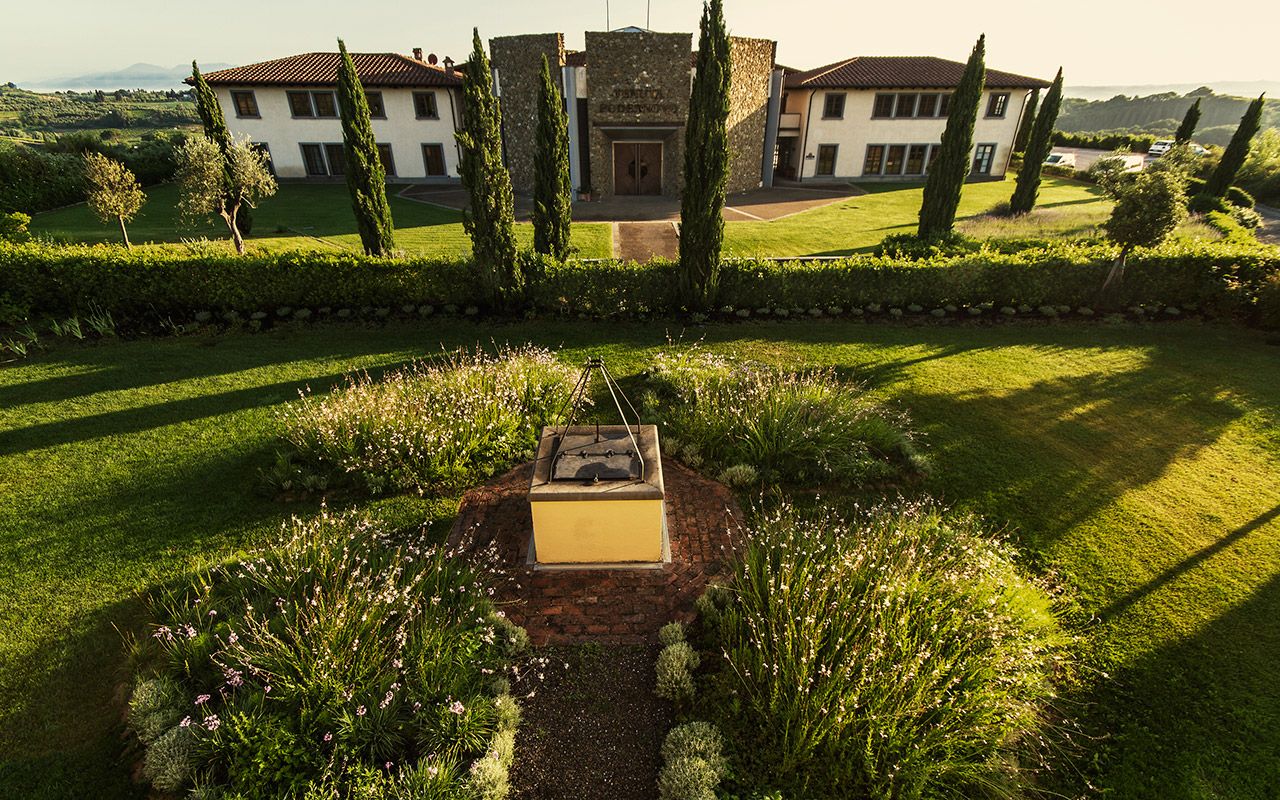
Vineyards management at its extremest: Tenuta Podernovo pioneer of 2.0 surgical organic farming
Located in the heart of Tuscany’s Terricciola village in the Colline Pisane (Pisa Hills), Tenuta Podernovo is a revolutionary wine estate owned and operated by the Lunelli family. It was the first estate of the Tenute Lunelli group to be recognized with organic certification in 2012.

Here the Lunelli family has chosen to prioritize sustainability and balance between nature and human influence in a very unique way, starting from the viticulture, employing for the first time in Italy the Anima Vitis system (see paragraph below).
Tenuta Podernovo was established at the beginning of the new millennium, when the Lunelli family decided set roots in Tuscany and start producing a choice of red wines. The rolling hills in the province of Pisa—paired exceptionally well with the rich history of the land—provided an ideal space for what they had in mind.

The 40 hectares of land in Terricciola, comprised of a multitude of sand and fossil deposits—as well as the geographic conditions—have proven to yield a distinctive microclimate with ideal growing conditions for the grapes (Sangiovese, Merlot, Cabernet Sauvignon and Cabernet Franc). Because the soil is diverse, medium-textured with a high clay and sand content, there is an overall peculiar balance and finesse to the wines produced by Tenuta Podernovo. I had a delightful and very informative visit with one of the most experienced wine makers in the area: Corrado Dalpiaz, more than 50 harvests on the shoulders, working since many years with the Lunelli family. You can watch the highlights of my tour in the IGTV video linked below.

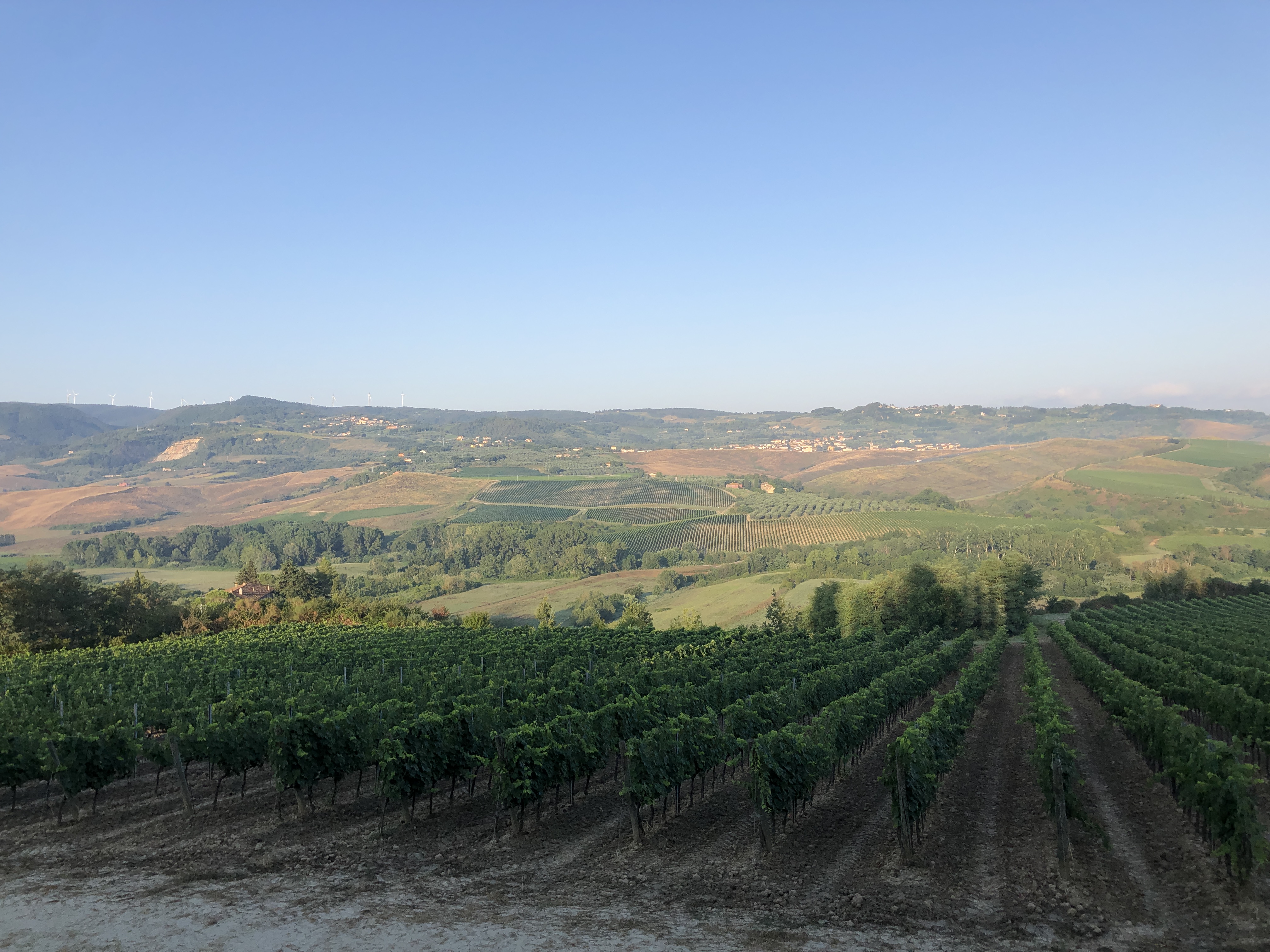
But before digging into the wines and the style, it’s worthy to understand why I used the word revolutionary at the beginning of this article.
Animavitis system
Tenuta Podernovo employs a distinctive wine production system called Animavitis, which is a precision technical vineyards management program that has been invented and is coordinated by the Italo – Brazilian oenologist Monica Rossetti, along with the collaboration of Arvatec.

The philosophy that has inspired this system is the phrase (that you may have heard several times): “wine is made in the vineyard,” but in this case this concept it’s applied at the extremest level.
The AnimaVitis program includes particular innovative technologies to map each row or small plot of the vineyards on the basis of the phenolic and vegetative potential of the vines. By employing ground surveys with active infrared sensors—namely, ones equipped with their own light source—the winemakers can “diagnose” in a surgical way the behaviour of the vines in the vegetative season in order to plan and adapt each and every viticultural action from pruning to fertilise, from canopy management to green harvest. The goal is to obtain the best fruit that the specific vine can give in that specific part of the vineyard.
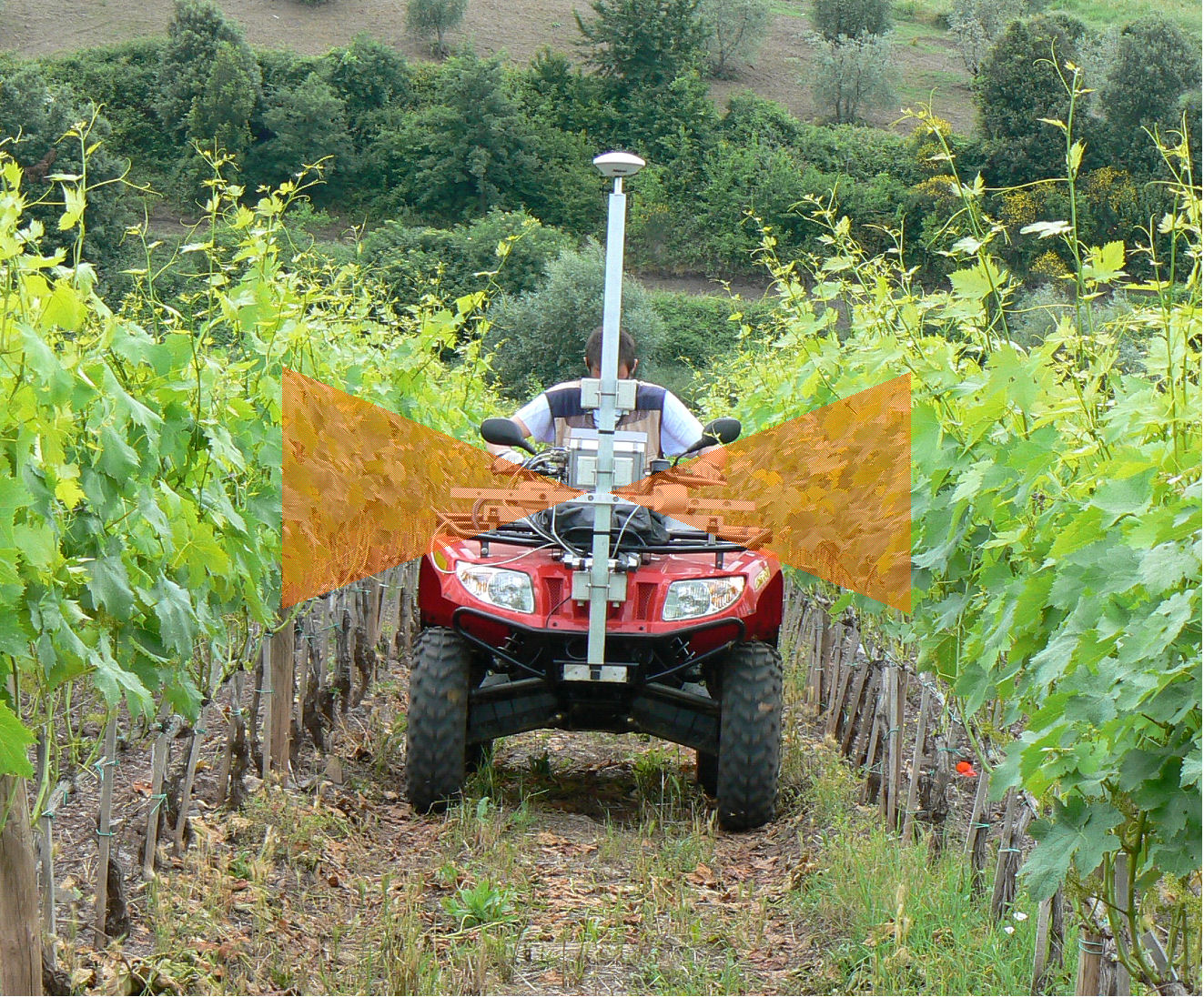
The scientific measurement is the NDVI (Normalized difference vegetation index) obtain by crossing several data such as the leaf area index, the photosynthesis capability and others.
As this is a new concept for precision viticulture, Tenuta Podernovo’s utilization of this program ensures that they remain on the cutting edge of winemaking. They were the first winery in Italy to apply this system in 2006 and today we can appreciate the result in their spotless, tailor-made Sangiovese wines. Tenuta Podernovo, thanks to this innovative system, is able to detect the best fruit of the entire property, even if it is scattered among different plots and rows. The best fruit comprises their cru wine (Teuto), obtained through the hard work of differentiate viticulture from the growing season to harvest (that implies not only multiple harvests, but multiple pruning, and so on… a lot of work!).

Last but not least, it has to be considered that the NDVI (Normalized difference vegetation index) changes every year depending on soil conditions, weather conditions, unforeseen natural events and on the base of the improvements and adjustments that every year the producer adopts in the vineyard. Take a look of the maps below and how the vineyards optimisation has improved at Podernovo in 4 years.
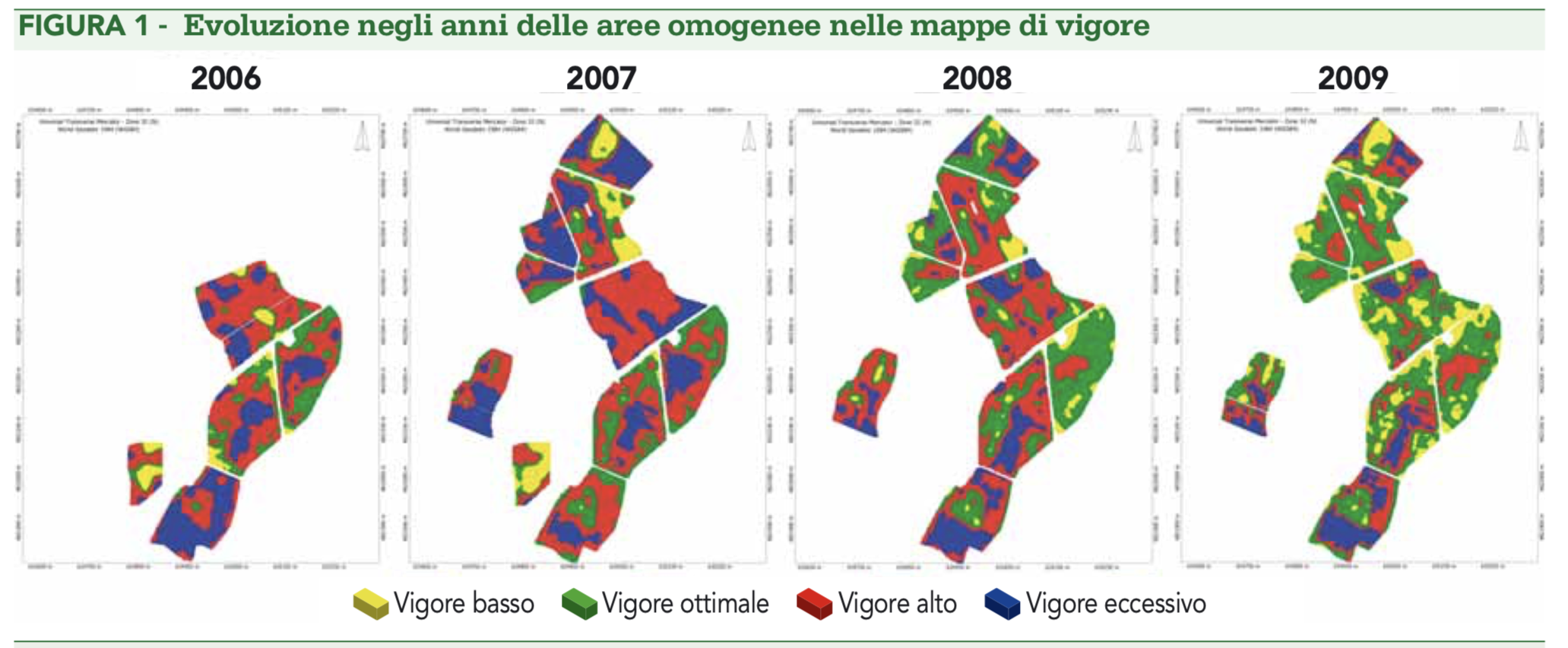
Other wineries adopted the system after Tenuta Podernovo: Franz Haas in Alto Adige, Ca’ Bolani and Villa Russiz in Friuli Venezia Giulia, Principessa Gavia (Banfi’s estate) in Piedmont, to name a few.
To close this article I would like to address those of you (I know there are many) who think that this is way too much “human” intervention on a product, the wine, that should be as “natural” as possible.
First of all I abstain myself to use the word natural referring to a wine. The wine is not natural, or it is obviously all natural, depending on the perspective.
Second: consider that the winery (Tenuta Podernovo) is certified organic, so the AnimaVitis system has nothing to do with the agricultural choices.
Third: if technology can help in the optimisation of the land and the crops it’s only a good thing for the environment. I find that the AnimaVitis system is more aligned with the concept of sustainable viticulture than any other “philosophic” approach, because it is based on science, not on spiritual beliefs or arbitrary procedures (I guess you understand what I am referring to, if you don’t, google “Rudolph Steiner”).
That being said: Teuto has been one of the most neat, sharp, true expression of Sangiovese I have ever tasted and the difference between the vintages is shocking. The grapes really translated a territory and the story of a growing season in the glass. If this was the final goal, it is more than achieved. It is mastered.
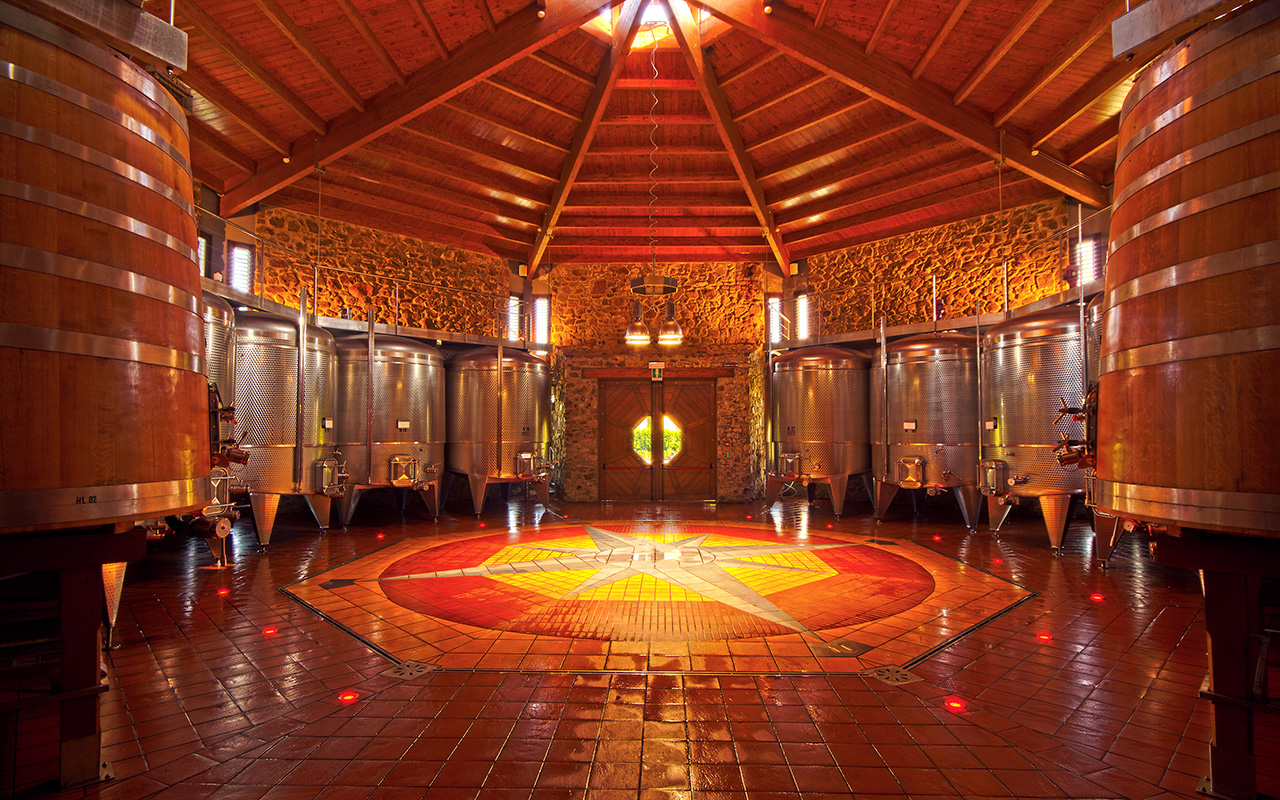
Wines produced by Tenuta Podernovo
As all of the wines produced by Tenuta Podernovo are made from the estate’s certified organic grapes, they also benefit from the added influence of the sandy, fossil-rich soils that provide a unique minerality.

Teuto:
This Tuscan red wine is produced with 65% Sangiovese grapes, 30% Merlot grapes, and 5% Cabernet Sauvignon grapes. This wine is crafted with the estate’s best grapes that are grown in the hills near Pisa—according to the Animavitis precision farming program. It matures for 20 months in large oak barrels and emphasizes this region’s ability to produce an elevated wine comprised predominantly of Sangiovese. Additionally, Tenuta Podernovo’s Teuto wine demonstrates a well-balanced red with fine, elegant tannins. The tactile sensation in the mouth is interesting: at first it’s silky and soft, but then the tannins come in slowly tingling your gums, and at the end the mineral note, the sapidity complete the tridimensional tasting! It is persistent, intense and perfumed. The 2016, soon to be released, it’s a gem, buy it and keep it for at least 3-4 years before drink it.
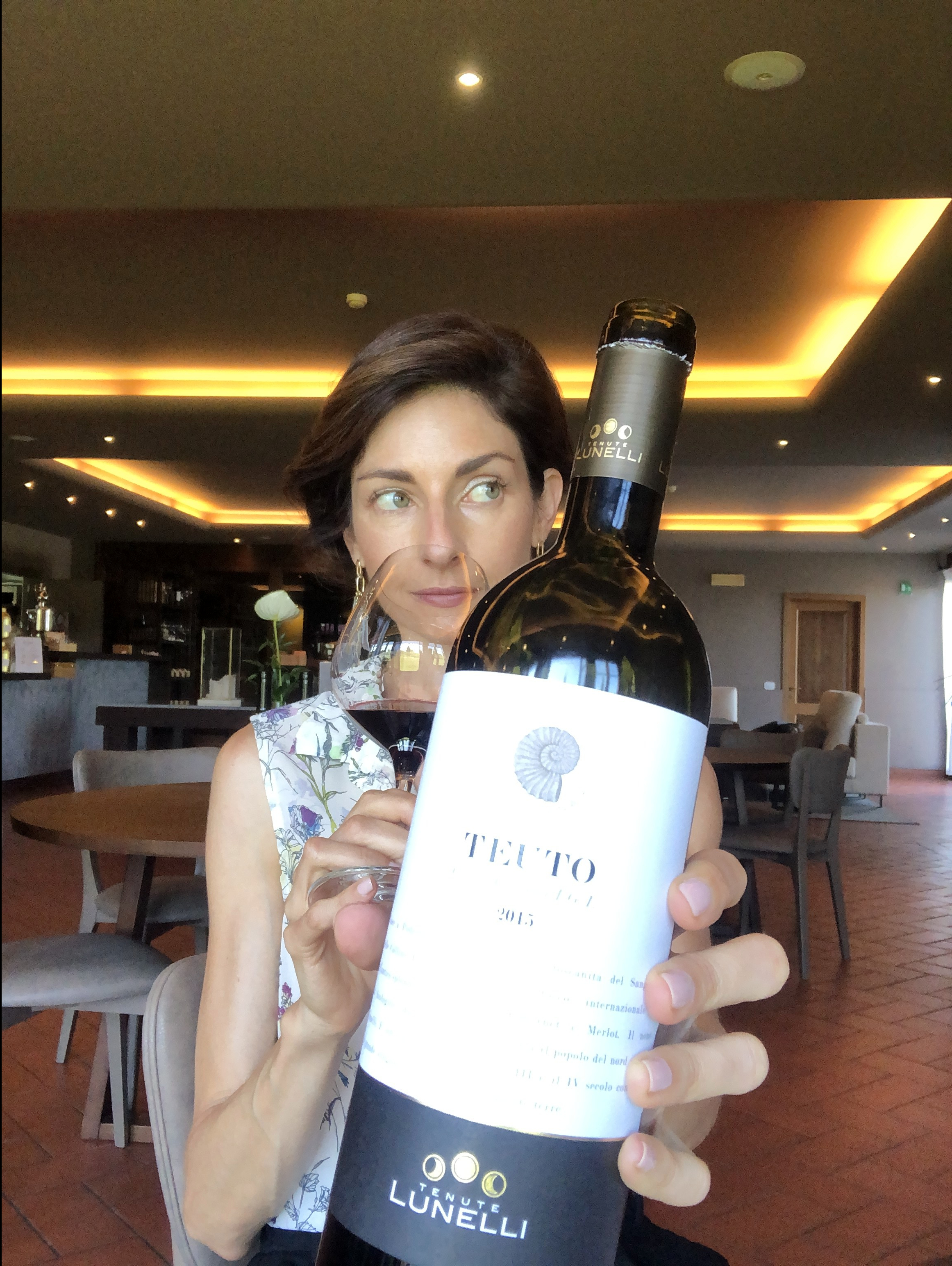
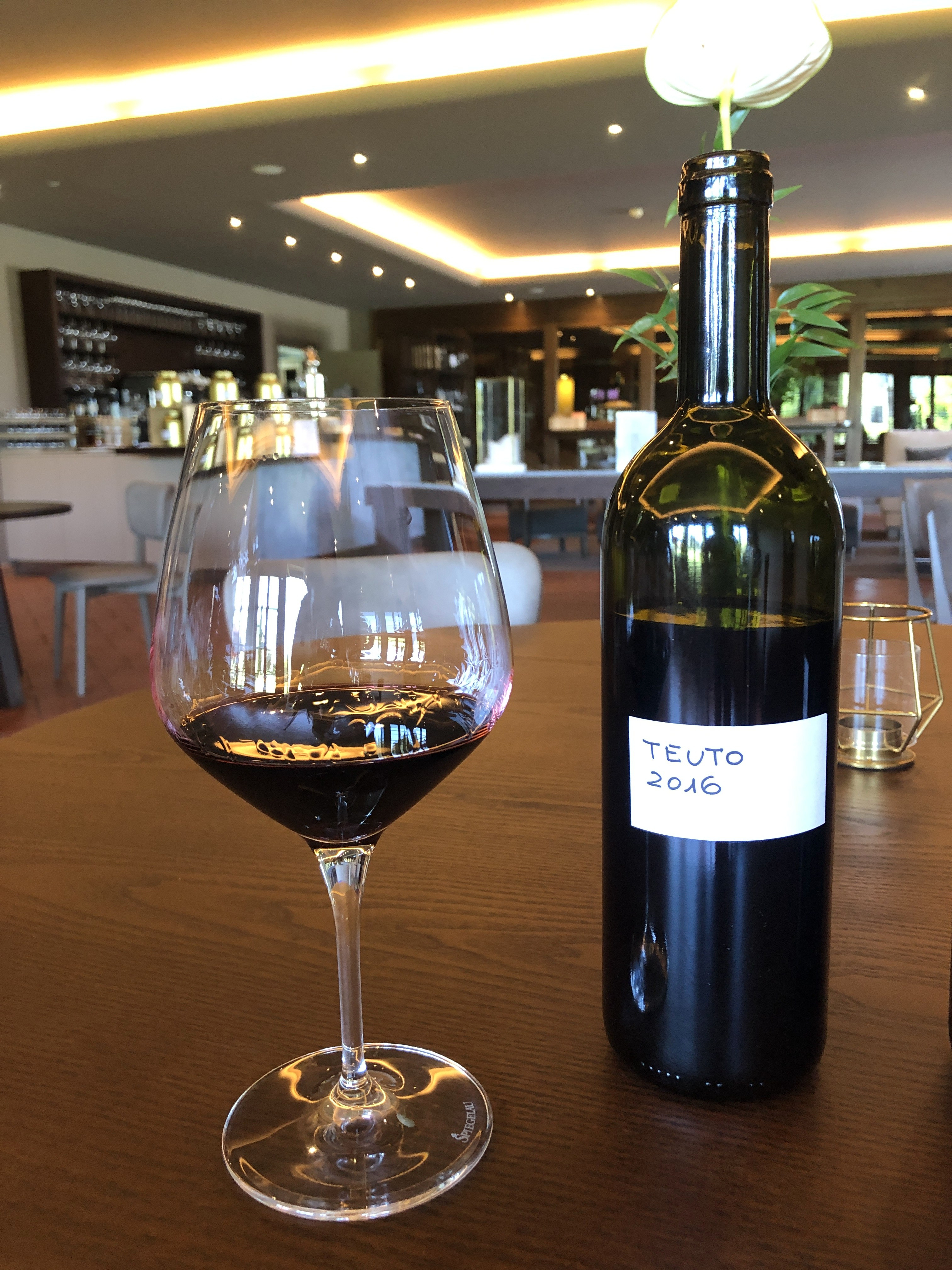
Aliotto:
The first wine from the Lunelli Estate to be certified organic, Aliotto is a red wine with a grape composition of 60% Sangiovese grapes and 40% Cabernet Sauvignon, Merlot, and other local grapes. The vineyards face west, south, and east at an altitude of 137 meters above sea level. Aliotto spends 12 months maturing in barriques before it is aged for a minimum of four months in the bottle. It’s a fresh, lively example of refined and lean Supertuscan: forget about the bold, rich and heavy structure you are used to when drinking this kind of wines, this is a younger, perfumed and sharper version of it. I would drink it lightly chilled with barbecue meat or the local roasted rabbit.
Auritea:
Made solely by Cabernet Franc grapes, this deep and concentrated red wine is named after Arca Aurita, which is the fossil shell of marine origin that has been a part of the soils of the estate for millions of years. This wine is the top wine produced at Tenuta Podernovo, and it matures for 18 months in French oak barriques before being aged at least 12 months in the bottle.
IGTV VIDEO of the winery visit:
[wpvideo GUjET0JO]


